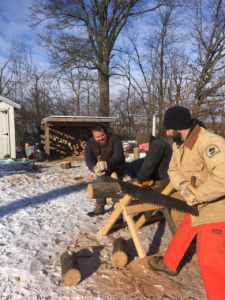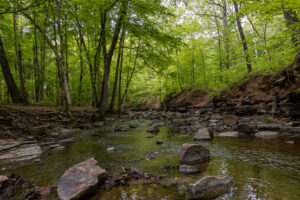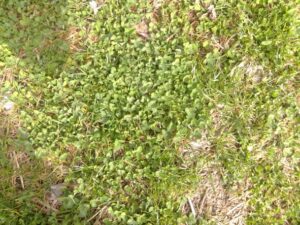 By Gabe Ross, Farm Manager
By Gabe Ross, Farm Manager
When guests walk into the kitchen at Gallant Farm the first thing they often notice is the wood burning cookstove. They are usually curious about what it’s like to cook on it compared to a modern electric or gas range, but cooking is really the last step in the process. The first step is finding and cutting firewood.
We primarily burn ash here at Gallant Farm, mostly because we have a plentiful supply, thanks (sadly) to the Emerald Ash Borer, which has decimated the ash forests. Ash is, however, a good firewood – it burns hot and splits very easily. Oak and maple are two of our other favorites. We only use wood from trees that have died and fallen in the parks; this gives them a head start on drying and keeps us from using living trees. Dead trees that are still standing provide ample habitat so we avoid those as well.
Today when we think of firewood harvesting, the chainsaw is often the first tool that comes to mind; In the 1930s this wasn’t the case. While chainsaws had been invented they were large, heavy pieces of equipment that often took two or more men to operate. They didn’t really take off until after World War II, when lighter-weight chainsaws were developed. Up to that point, the tool of choice for “bucking up” firewood was the one- or two-man crosscut saw. Crosscut saws require an extensive sharpening process which involves “jointing, setting, and swaging.” Incidentally, when someone uses the term “out of joint” this is derived from the way a saw cuts before the teeth and rakers are jointed or filed to the proper height. While cutting with a chainsaw is much faster, I really do enjoy using the crosscut, it warms you up and you don’t have all the awful noise and exhaust fumes. With a good partner you can really get a rhythm going and cut fast. Farmers who cooked and heated with wood had a lot of cutting to do to get a stack big enough for the year; if you had a maple syrup operation you needed even more wood.
After cutting the wood it then must be split and stacked, and it takes about six months for the wood to dry. Dry wood starts faster, burns hotter and is safer because it deposits less creosote in the chimney which can cause fires. But even with burning dry wood, the chimney must be swept once a year.
Next time you flip the dial to turn on your oven at home think, about all the prior planning and steps that went into a homecooked meal 80 to 90 years ago. Then come to Gallant Farm to see our wood-burning stove in action!








